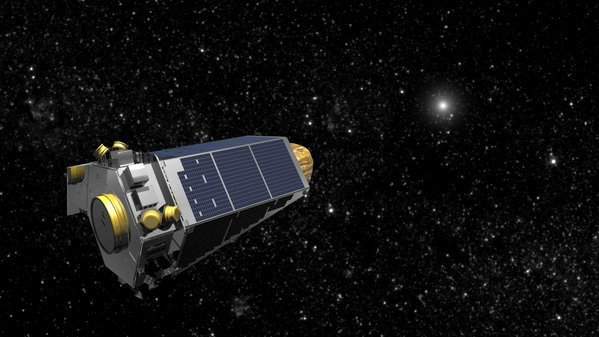Hungarian research results published by NASA
NASA has published the research results of a Hungarian team of astronomers from the Hungarian Academy of Sciences and the Eötvös Loránd University. The study was posted on NASA’s homepage as well as the JPL’s website on exoplanets, 444.hu reports.
The team, led by András Pál, studied the dwarf planet 2007 OR10, the largest known body in the Solar System that does not have an official name. They used data from the Kepler and Herschel space observatories and discovered that the dwarf planet is much larger than originally thought.
The Kepler space telescope was designed to study exoplanets – planets that orbit a star other than the Sun – but it has proven useful in every field of astrophysics. In 2014, it measured the changes in brightness on the OR10 dwarf planet continuously for two weeks. By studying the light and dark features of the surface the scientists determined that the planet takes almost 2 days to complete a spin around its axis. This is surprisingly long compared to the other dwarf planets, which complete their spin in just 6-12 hours.
Planets and dwarf planets only reflect a portion of sunlight on a visible wavelength, the other portion is absorbed and sent back out as heat. This was observed in infrared by the Herschel Space Observatory. The ratio of reflected and absorbed light indicates whether the planet is small and bright or big and dark. The Herschel and Kepler data combined, scientists found the latter to be true for the 2007 OR10.
The OR10 is different from other Trans-Neptunian objects in that it is red, while the majority of the other dwarf planets are white and bright, like the heart on Pluto. The OR10 is more similar to the dark areas surrounding the heart; it reflects less than 10% of light but on a much bigger surface than it was estimated before.
While previous studies approximated 1290 km, based on the new studies, the Hungarian team estimates the diameter of the planet to be 1535 km, which makes the 2007 OR10 the third largest dwarf planet after Pluto and Eris.
The difference is significant, since it indicates that the dwarf planet’s gravity is much higher than it was previously estimated. Thus, it is possible that the dwarf planet could keep substances such as carbon-monoxide, nitrogen, and methane frost on its surface. These turn red when they are exposed to large amounts of radiation, giving the dwarf planet its characteristic red colour.
The new discovery could finally provide enough information for NASA to give an official name to the dwarf planet. Read more about the project of the Hungarian scientists here.
Photo: twitter.com/NASAKepler
Copy editor: bm
Source: 444.hu
please make a donation here
Hot news
Top Hungary news: winter is here, Romania joins Schengen, American woman’s murder details – 23 November, 2024
Hungarian foreign minister outrages for US sanctions against Putin’s Gazprombank
Suleiman the Magnificent: The Great Sultan’s heart rediscovered in Hungary
The National Bank of Hungary cooperates with Chinese university
PHOTOS: Beloved Hungarian hotel in the picturesque Danube Bend reopens in five months
Attention, users! BudapestGO app renews in November, new features available




